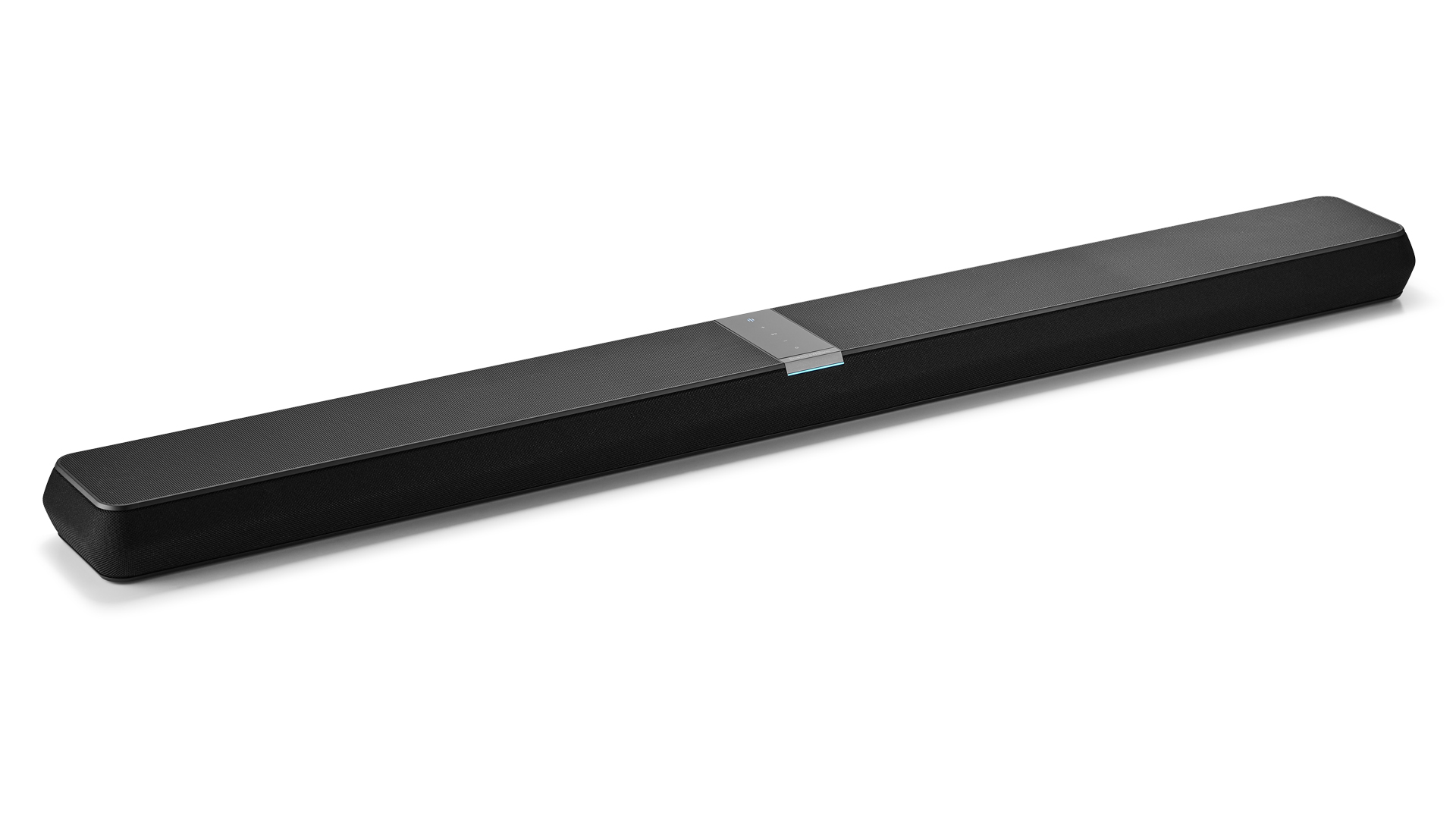What Hi-Fi? Verdict
The Panorama 3 has a room-filling sound with an impressive low end, but overall it’s a touch uneven, with dialogue that lacks clarity and sparkle
Pros
- +
Sleek low profile design
- +
Weighty bottom end
- +
Self-contained
Cons
- -
Voices lack clarity
- -
Not a particularly expansive soundstage
- -
Tonally inconsistent
Why you can trust What Hi-Fi?
Polo-neck fan and Apple founder Steve Jobs once astutely rationalised that “simple can be harder than complex”. It's a presumption that could be said to be true of both art and technology but also the realms where they sometimes haphazardly collide, such as soundbars. While it’s easy to cloak weaknesses with a myriad of customisable features and add-ons, a more straightforward, pared-back approach nevertheless requires near-perfect execution or else runs the risk of its inflexibility exposing its flaws.
The Panorama 3, the first Dolby Atmos soundbar from historic audio brand Bowers & Wilkins, confidently strives to simplify immersive home cinema, providing no settings, room calibration or sound modes to tweak beyond a basic two-band EQ and, of course, volume. Instead, the company says that the soundbar will always automatically decode content appropriately, be it movie, music or game – removing any guesswork for the user.
Not only that, but the brand, well known for its range of integrated Formation wireless speakers, is so certain of the B&W Panorama 3’s prowess that, quite uniquely for a product at this level, it does not provide an optional sub or rear speakers to enlarge the system into a ‘true’ surround set-up, preferring instead to pitch it as an all-in-one home theatre solution.
And it’s one that we find rather tempting. After all, isn’t the point of a soundbar that it delivers cinematic audio without the need for lots of speakers? That said, we’ve got mixed feelings about Bowers & Wilkins’s decision to remove any optional add-ons. On the one hand, we’ve often found that with multi-box set-ups, unless all the speakers are top performers, the system quickly becomes un-cohesive, and the sub and surrounds can be distracting. Furthermore, it can be frustrating for customers who have spent big on an external TV speaker yet feel they’re getting sub-par performance because they haven’t got the space or money to go all-in on the full range.
However, one of the major advantages of having a high-quality wireless soundbar, especially one that functions as part of a multi-room system, is its flexibility, allowing users to adapt or enhance their set-up as their circumstances and living space evolve.
Build
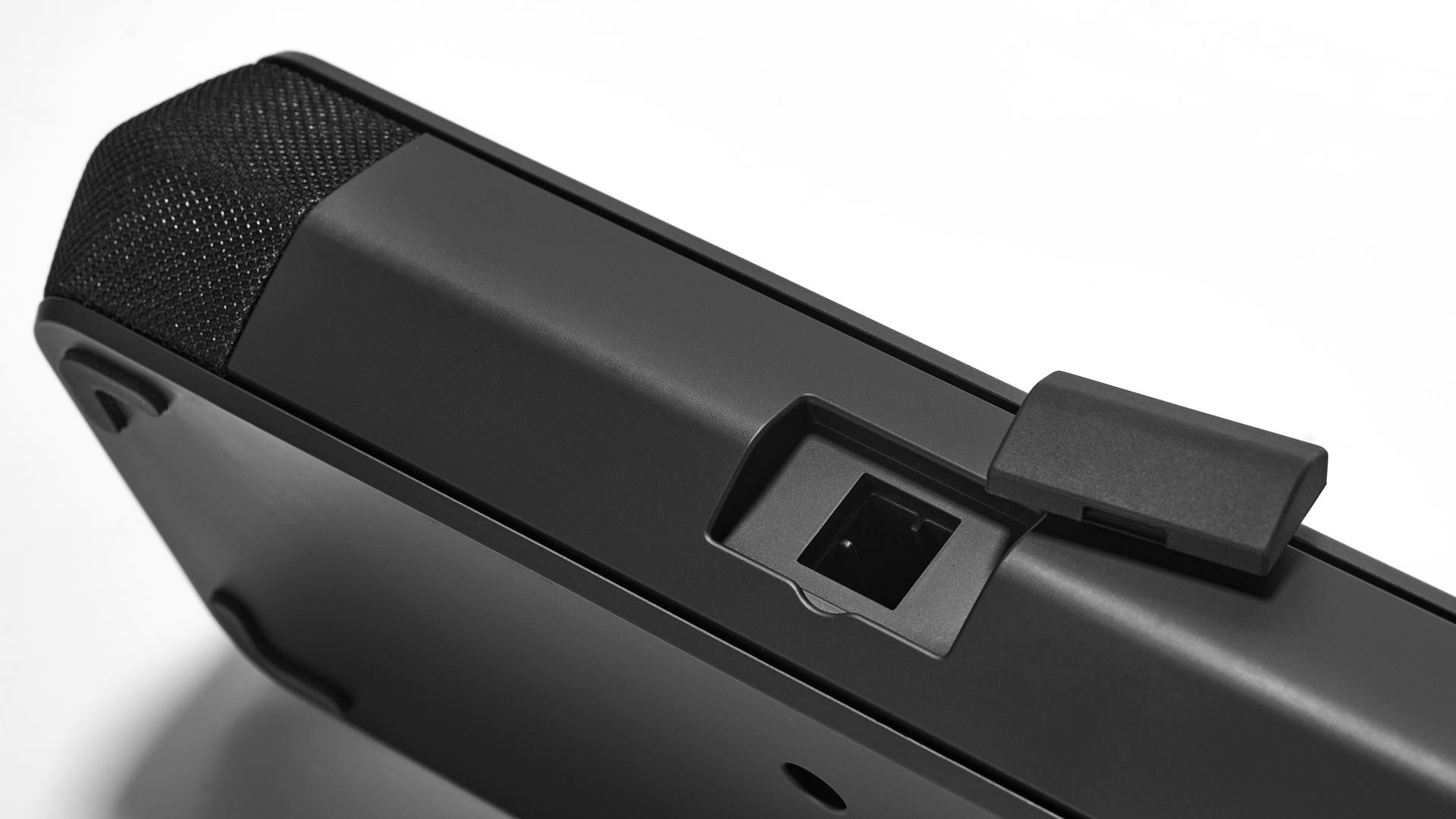
Measuring 121cm long, the Bowers & Wilkins Panorama 3 is no shrinking violet, but with a 6.5cm ultra low profile form, it can stealthily sneak beneath most TVs without blocking the screen (rigging is included in the box should you prefer to wall-mount). The convex front face is covered in a wrap-around fabric mesh, while the top surface features a perforated metal grille and capacitive ‘hidden until lit’ buttons in the centre, which look very smart until smudged.
The shortness of its stature is impressive but, given that Bowers & Wilkins products are well known for their originality and design flair (see the B&W Zeppelin), we have to admit that the non-descript, slightly squashed custard-slice build of the Panorama 3 is a bit of a disappointment in the looks department.
Packed inside are 13 individual driver units powered by ten 40 watt amplifiers in a 3.1.2 configuration. Across the front, in a Left-Centre-Right arrangement, each channel group includes twin 5cm midrange drivers partnered by decoupled 19mm titanium-dome tweeters.
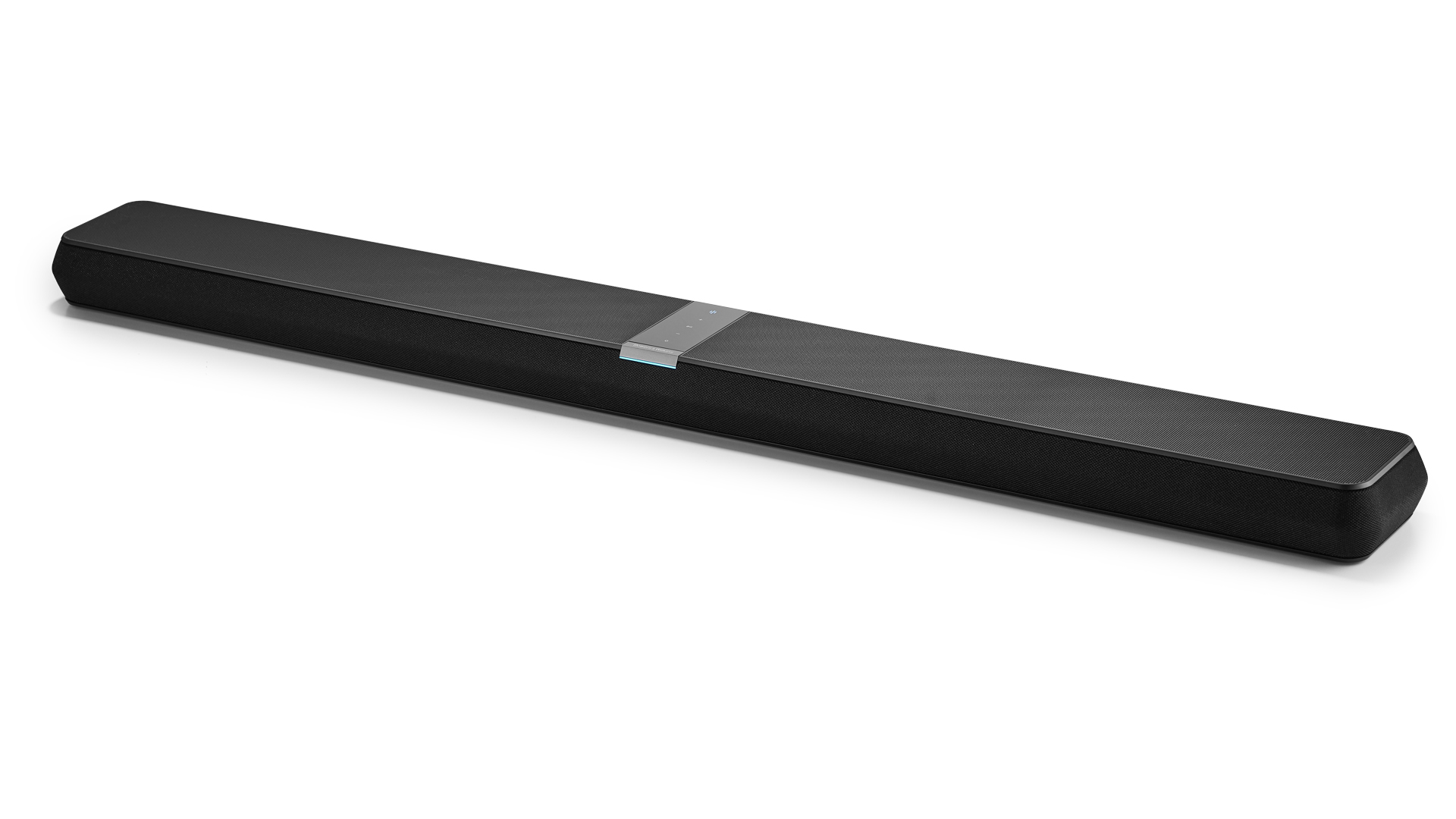
Inputs HDMI eARC, Digital Audio In (Toslink)
Channels 3.1.2
Audio Formats Dolby Atmos, Dolby Digital True HD, Dolby Digital+, LPCM
Finishes x 1 black
Streaming AirPlay 2, Spotify Connect, Bowers & Wilkins Music App
Bluetooth Bluetooth 5, aptX adaptive
Voice control Amazon Alexa enabled
Dimensions (hwd) 6.5 x 121 x 14cm
Weight 6.5kg
Meanwhile, two angled 5cm drivers are on the top to deliver height effects. Unusually, the upper surface also houses twin 10cm subwoofers mounted in an acoustic enclosure. Few soundbars include dedicated bass channel drivers, let alone ones of this size, and Bowers & Wilkins say that by placing them in this way, the Panorama 3 can achieve a "deep, extended bass with no need for an external subwoofer".
At the rear is a single HDMI eARC port and an optical digital input for older TVs. If you use the latter, Bowers & Wilkins has included technology for the soundbar to ‘learn’ key TV remote control commands so that users can enjoy the same unified experience as those with eARC connections. The Panorama 3 doesn’t have its own dedicated remote, relying on app control, while there’s also Amazon Alexa onboard for hands-free voice commands.
Streaming is well catered for with AirPlay 2, aptX Adaptive Bluetooth and Spotify Connect, while high-resolution listening is supported via the Bowers & Wilkins Music App, which gives listeners access to streaming services including Tidal, Deezer and Qobuz, with the number of supported platforms set to expand later this year.
Despite audio format support including Dolby Atmos in both its Dolby TrueHD and Dolby Digital Plus versions, this doesn't (at launch) extend to rival immersive codec DTS:X. However, Bowers & Wilkins is keen to stress that the Panorama 3 has been designed to be upgraded over time, suggesting that DTS:X support may one day be added. Additionally, multi-room capability is planned for introduction shortly after launch to make it compatible with other Panorama soundbars, Zeppelins and Formation products, though not as part of a multichannel system.
Price
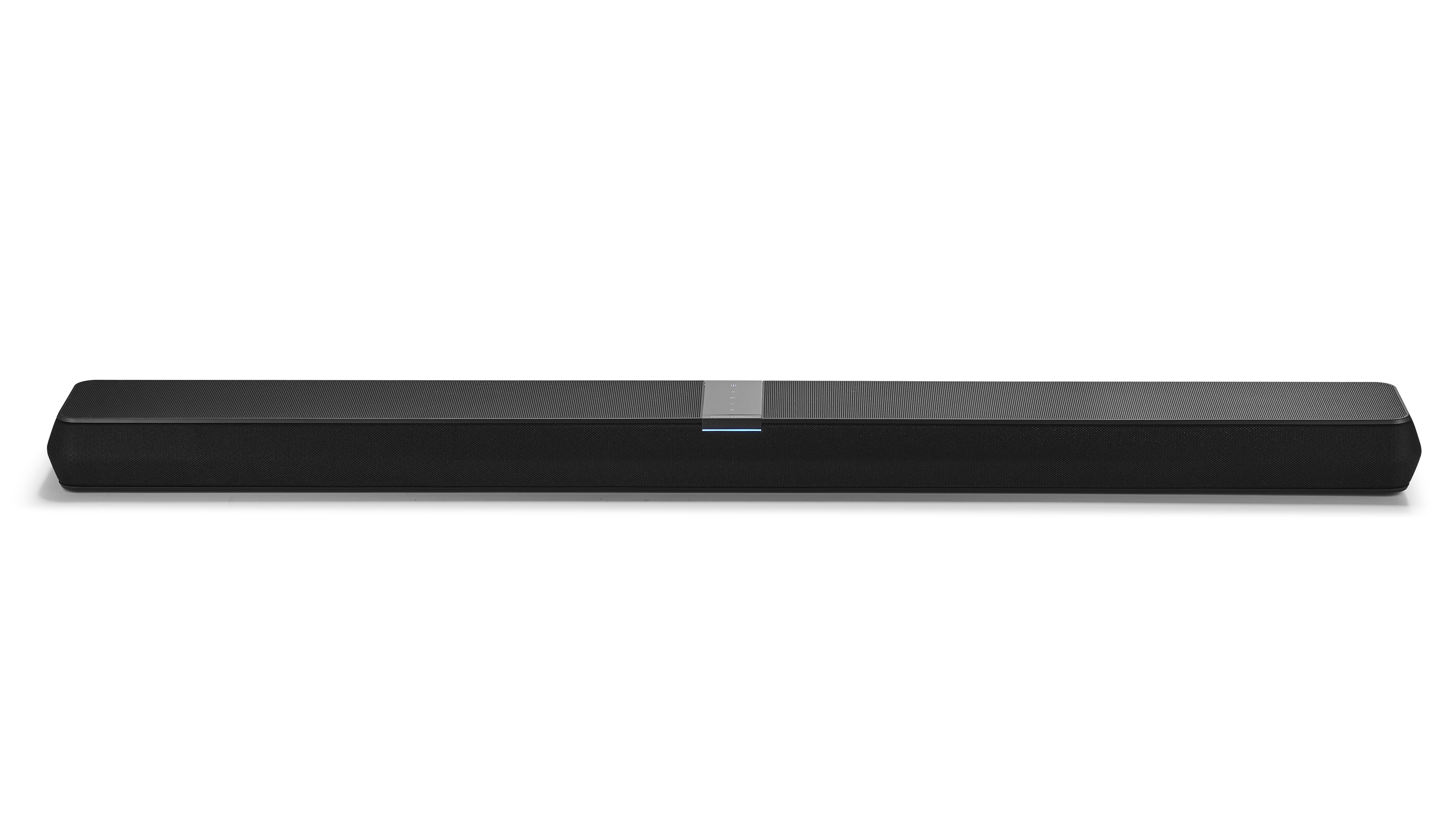
Although its predecessor, the Panorama 2, cost a whopping £1650 (around $2170 / AU$2885) when it launched back in 2013, the Panorama 3 is more modestly priced at £899 / $999 (AU$1599). The price point is significant as it puts it in direct competition with the Sonos Arc (£899 / $899 / AU$1499), a 5.0.2 Dolby Atmos soundbar that remarkably, despite being nearly two years old, is still the class leader in this price range.
Within the Bowers & Wilkins ecosystem, the Panorama 3 sits alongside the futuristic-looking 3.0 channel Formation Bar, which launched at £999 / $1199 (AU$1999).
Both the Formation Bar and the Sonos Arc can be expanded with additional speakers. In the case of the Sonos Arc, users can add two Sonos One SL speakers (£358 / $358 / AU$538) and a Sub (£699 / $699 / AU$999). Meanwhile, the Formation range also includes the compatible Flex surrounds (£429 / $499 / AU$749) and Bass sub (£999 / $1199 / AU$1699).
To find a single soundbar capable of delivering a significant amount of bass, users may need to look to the higher end of the market with premium models such as the Sony HT-A7000 (£1199 / $1300 / AU$1699), which delivers 7.1.2 channels of sound on its own (though you can add an optional sub and surrounds for nearly double the price) or the 5.1.4 slab of sound that is the Sennheiser Ambeo (£2199 / $2500 / AU$4000).
Sound

We admire the conviction of a soundbar that boldly goes it alone, and we’re undoubtedly curious to hear what those upward-firing woofers can do. Starting off our testing with the Blu-ray of No Time To Die, the opening scene in the desolate Norwegian landscape doesn’t give them much to grapple with initially but does allow us to hear how detailed and engaging the Panorama 3 can be. The delicate sounds such as the footsteps in the snow and the slow slide of the door opening are precise and transparent and, although the soundscape and score may be on the sparse side here, as Madeleine moves around the house there’s a real sense of the size of the space in which she’s changing, with sudden dramatic shifts dynamically presented.
Later, as Bond visits Vesper’s tomb, the ominous gusts of winds on the hillside have notable height and texture, and when the bomb suddenly detonates, we’re treated to a weighty, layered explosion. The woofer drivers add a level of welcome heftiness that’s often missing from single-chassis soundbars and, although you’re not going to get cinematic levels of resonant, rumbly bass, the sound is well controlled, adding effective impact that is proportionate and engaging.
However, as the action shifts and we’re treated to busier soundscapes with more dialogue, we find that the Panorama 3 can sometimes struggle to maintain its composure. Conversations that take place inside the Aston Martin, for example, sound overly closeted and, occasionally, speech is muffled. Furthermore, in moments where the action gets intense, such as the shootout in Matera, where score, sound effects and speech all vie for space, the imaging can become a bit cluttered and unbalanced. In this respect, it's trumped by the Sonos Arc which, while more sanitised, is punchier and better organised, with a broader soundstage and more significant left-right separation. Unlike the Panorama 3, the Arc also boasts ‘surround’ drivers at its extremities that do an excellent job of projecting sounds such as the ricocheting bullets out to either side of the listening position, providing a greater sense of immersion and surround sound.
Similarly, when watching the Sandworm reveal in Dune, it's apparent that, although the Panorama 3 has an extensive, room-filling sound, effects coming from the vertical speakers, such as the ornithopters, don’t exhibit much forward throw or spatial precision. However, it has a strong grip on the musical elements such as the strident Celtic drums in the score and the tinkling granular ‘spice’, rendering the soundtrack with richness and sparkle.
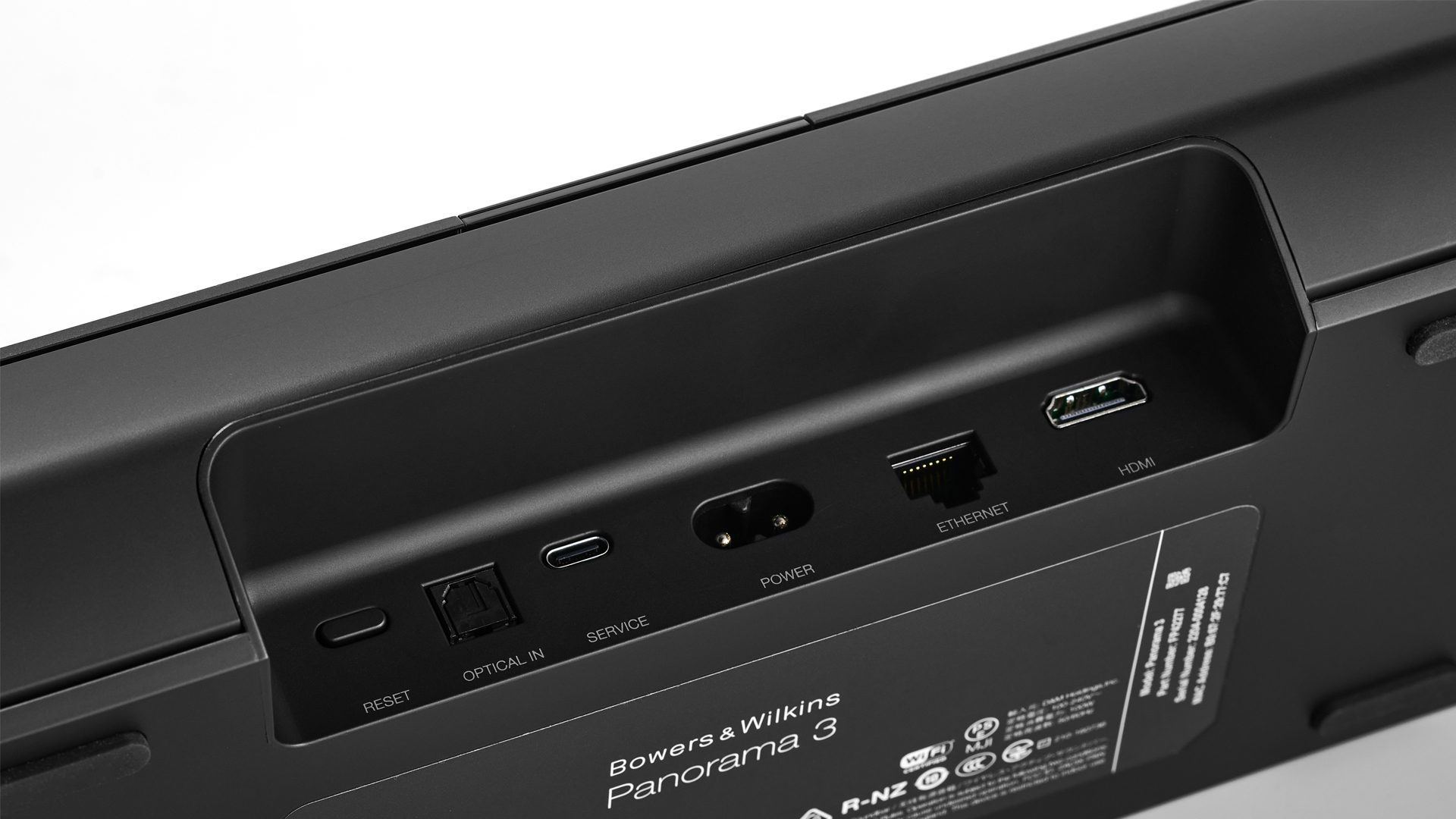
Switching to the opening scene of The Social Network in 5.1, we get a chance to hear the Panorama 3’s upmixing, which it does automatically. The quick-fire exchange between a young Mark Zuckerberg and Erica Albright can prove a challenge for some speakers. Here we can follow what's being said; however, the nasal tone of Zuckerberg’s deadpan speech sounds overly pronounced and in general the voices don’t have the same openness or authenticity as the other parts of the soundscape. The background noise of the club has a sense of roomy, bustling realism, though it’s more prominent in volume than when listening via other speakers such as the Sonos Arc.
Given its larger-than-average woofers, we were optimistic that the B&W Panorama 3 might deliver on the promise so many soundbars make to be equivalently capable as a music speaker. Overall, it does a decent job and is most successful with acoustic and classical tracks. Listening to Vivaldi’s Four Seasons: Recomposed by Max Richter, the strings sound lively and warm, with the added bass extension providing a natural boost to the cello and double bass.
But with more rhythmically challenging songs such as the chaotic Space Captain by Joe Cocker and the starkly ethereal Hyperballad by Björk, it can quickly become unfocused, losing coherence.
We’re struck by how recessed the typically upfront vocals are while listening to Jamie T’s If You Got the Money. The scant arrangement of disparate bass, guitar and drums highlights the disjointed tonality of the Panorama 3, where some frequencies seem more pronounced than others. Using the two-band EQ, which has sliders adjustable in increments of 0.5 dB, it's possible to improve this somewhat, notching back the bass so that it doesn't mask higher frequencies and slightly boosting the treble to brighten up the midrange. But ultimately, it’s a rudimentary fix, and we weren’t able to find a happy medium that worked consistently well across a range of content in our listening room.
Verdict
The B&W Panorama 3 does some things very well as a (relatively) affordable and self-contained soundbar with a competent, dynamic and detailed Dolby Atmos presentation. Its built-in low-end is unusual at this price point and adds welcome weight to lively action films and scores.
However, there’s more to a cinematic performance than bass, and musically, as with most soundbars, it's merely competent. Unfortunately, the Panorama 3 doesn’t deliver across the board as well as some of the competition, such as the Sonos Arc with its impressive height projection, soundstage, organisation and sparkling dialogue.
SCORES
- Build 4
- Features 4
- Sound 4
MORE:
Read our Sonos Arc review
Also consider the Sony HT A7000 review
Read our Bluesound Pulse review
Our pick of the very best soundbars
What Hi-Fi?, founded in 1976, is the world's leading independent guide to buying and owning hi-fi and home entertainment products. Our comprehensive tests help you buy the very best for your money, with our advice sections giving you step-by-step information on how to get even more from your music and movies. Everything is tested by our dedicated team of in-house reviewers in our custom-built test rooms in London, Reading and Bath. Our coveted five-star rating and Awards are recognised all over the world as the ultimate seal of approval, so you can buy with absolute confidence.
